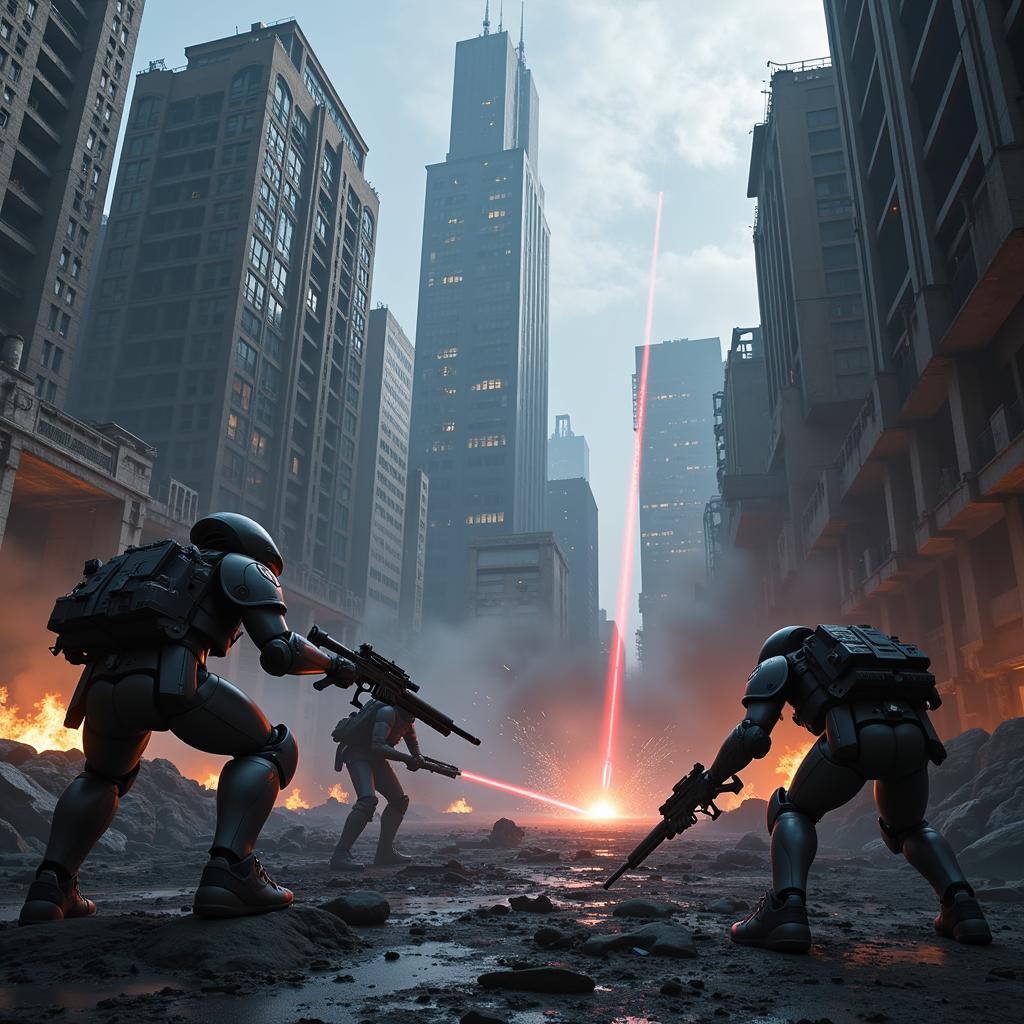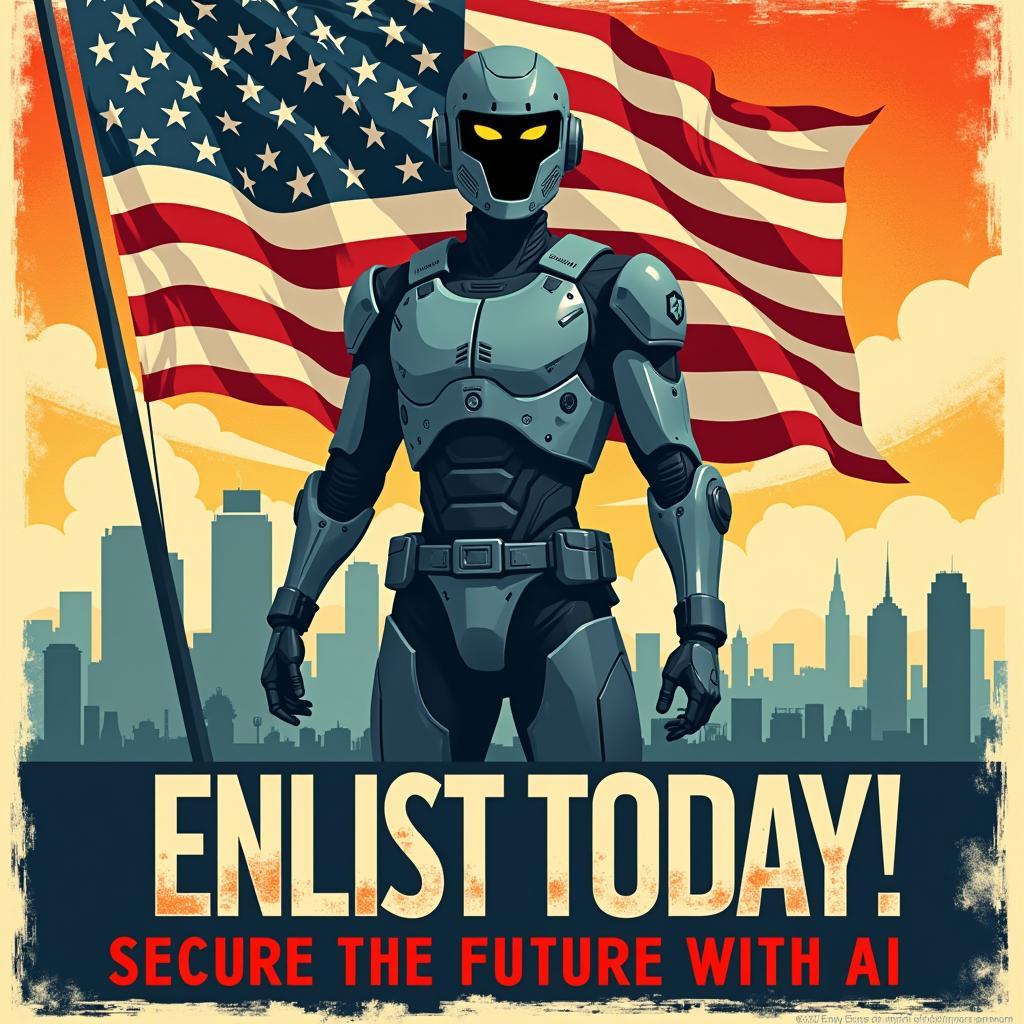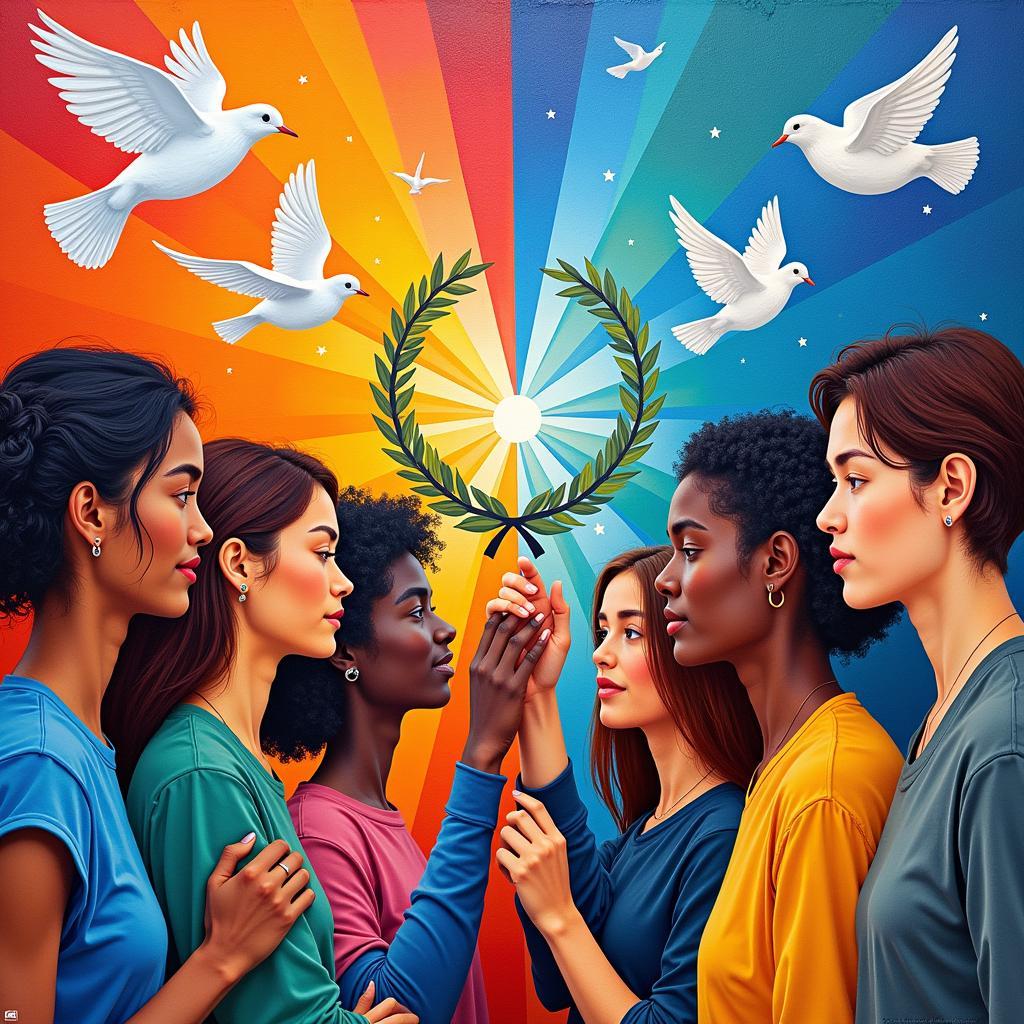The realm of “Ai Soldier Art” presents a fascinating paradox, merging the harsh realities of warfare with the boundless creativity of artificial intelligence. This convergence challenges our perceptions of both art and conflict, prompting us to consider the evolving role of AI in society and its potential impact on how we visualize and understand war.
Redefining the Battlefield: How AI is Transforming Military Art
Historically, art has played a crucial role in documenting and interpreting warfare, from ancient cave paintings depicting battles to Renaissance canvases immortalizing military victories. Today, AI is poised to revolutionize this relationship, offering new ways to create, experience, and comprehend the visual language of conflict.
AI algorithms, trained on vast datasets of historical and contemporary imagery, can generate strikingly realistic battle scenes, design camouflage patterns that adapt to diverse environments, and even create personalized propaganda tailored to specific audiences. This has led to the emergence of a new genre of art that blurs the line between reality and simulation, raising ethical questions about the potential for manipulation and the implications for future conflicts.
 AI-Generated Battlefield
AI-Generated Battlefield
The Weaponization of Aesthetics: AI and the Propaganda Machine
The ability of AI to generate hyperrealistic imagery and tailor content to specific demographics has significant implications for propaganda and psychological warfare. AI-powered systems can create convincing deepfakes, manipulate social media narratives, and disseminate targeted messages designed to influence public opinion and sow discord among enemy forces. This raises concerns about the potential for misinformation, the erosion of trust in traditional media, and the ethical implications of using AI to manipulate human emotions and behavior.
 AI-Generated Propaganda Poster
AI-Generated Propaganda Poster
Beyond the Battlefield: AI Art as a Tool for Peace
While the potential for AI to be used in harmful ways is undeniable, it also holds immense promise as a tool for promoting peace and understanding. Artists and activists are leveraging AI to create powerful works that challenge traditional narratives of war, humanize the experiences of soldiers and civilians caught in conflict, and foster dialogue across cultural divides.
For example, some artists are using AI to generate portraits of victims of war, giving faces and voices to those often forgotten. Others are creating interactive installations that allow viewers to experience the realities of conflict through virtual reality, prompting empathy and encouraging viewers to consider the human cost of war.
 AI-Generated Peace Mural
AI-Generated Peace Mural
The Future of AI Soldier Art: Navigating the Ethical Minefield
As AI technology continues to advance, its influence on the art world and its implications for warfare are likely to become even more profound. It is crucial that we engage in thoughtful discussions about the ethical considerations surrounding AI soldier art, ensuring that its development and deployment are guided by principles of responsibility, transparency, and human oversight.
The intersection of AI and warfare presents both challenges and opportunities. By fostering collaboration between artists, technologists, ethicists, and policymakers, we can harness the power of AI to create art that not only reflects the realities of conflict but also inspires us to strive for a more peaceful future.
FAQ
1. Is AI art considered “real” art?
This is a complex question with no easy answer. While some argue that AI art lacks the human touch and emotional depth of traditional art forms, others view it as a natural evolution of artistic expression, pushing the boundaries of creativity and challenging our definition of art itself.
2. Can AI art be used for good?
Absolutely. AI art has the potential to be a powerful tool for social change, raising awareness about important issues, promoting empathy and understanding, and inspiring action.
3. What are the ethical concerns surrounding AI soldier art?
Key concerns include the potential for AI-generated imagery to be used for propaganda and manipulation, the risk of perpetuating harmful stereotypes and biases, and the need to ensure that AI technology is developed and used responsibly.
4. How can I learn more about AI art and its impact on society?
Explore online resources, attend workshops and exhibitions, and engage in discussions with artists, technologists, and ethicists to deepen your understanding of this rapidly evolving field.
Explore Further
For more insights into the fascinating world of art and history, check out these related articles:
Get in touch with us for any inquiries or assistance:
Phone: 02462573573
Email: [email protected]
Address: Savico Megamall, 7-9 Đ. Nguyễn Văn Linh, Gia Thụy, Long Biên, Hà Nội 10000, Việt Nam
Our dedicated customer support team is available 24/7 to assist you.